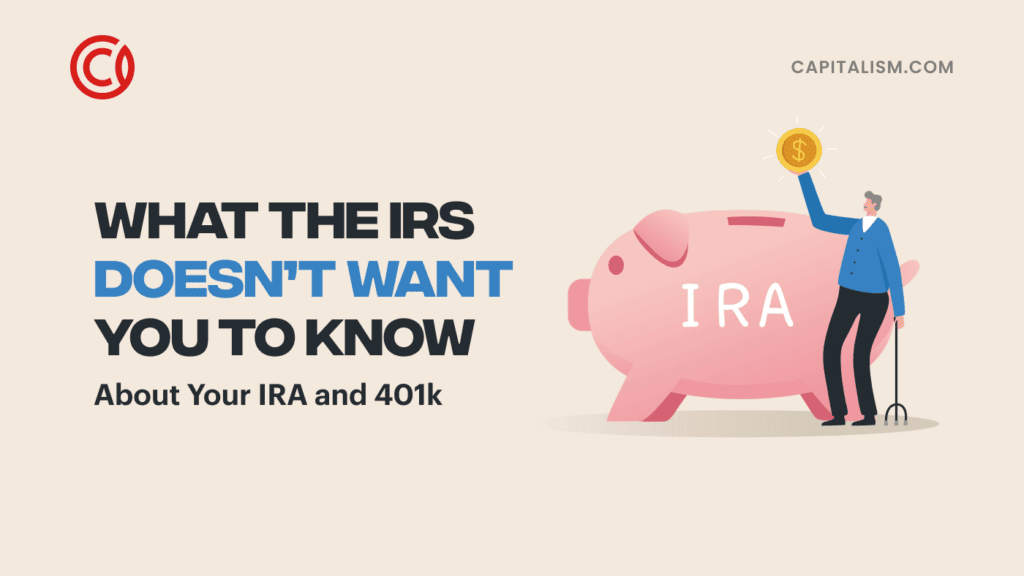When I explain how to create a corporate structure perhaps the most asked question is: “and…how exactly do I get paid?” Compensation options… it’s a valid question. Just because we set up a corporate structure it doesn’t always follow that our personal finances are given the same protection or benefit. It is just as important to be sure we’re receiving our due compensation from our corporate structures in a way which doesn’t jeopardize our financial plans.
As controllers of corporate assets, we certainly don’t want to get paid by going to a job or being an employee. And with the difficulties moving money from one entity to another, getting paid from distributions can be an expensive tax proposition. The IRS doesn’t typically allow deductions for expenses related to “living” as a human being. And so, unless we’re careful about our expenditures, we may end up paying the “Max Tax” on items which are required to live (clothing, food, lodging, etc).
How we, the living people, get paid for our necessities in life is a critical part of how we stay compliant and live well within the tax system. For the folks I work with, it has a simple solution, but it doesn’t have a simple explanation. This article will cover 6 things one ought to investigate before they consider compensation options from their corporate structure.
Things Not to Do
Before we can cover how to get paid from within a corporate structure, it’s important to address potential problems which should be avoided by so doing. Since the entire purpose of setting up a corporate structure is to solve for Asset Protection, Tax Reduction, and Legacy Preservation combined, we want to avoid anything which might impede the effectiveness of any of those three. And while no creative structure can perfectly solve everything, there are definitely scenarios we want to avoid.
S-Corps
If your CPA set you up with an S-Corp, I trust you fully understand that the only benefit to setting up an S-Corp is Tax Reduction… and there, only in a niche deployment. Because of the freely transferable interest of S-Corps, there is zero chance of Legacy Preservation. And although S-Corps enjoy the benefit of Limited Liability (as do all other corporate entities in the USA), a Sole Proprietor S-Corp will be easily blown up under scrutiny. The Sole Proprietor is really just an “alter ego” of themselves trying to avoid paying their fair share of taxes.

The ONLY legitimate way to get paid out of this entity is via a reasonable wage as a W-2 employee and a portion of profit distribution as a shareholder of the company. And while it’s true that the distribution portion is not subject to any Social Security taxation (nice), neither W-2 or distribution income enjoys any deductions outside of the standard, sub-standard deductions afforded social slaves (you and me) on the 1040 form (blech).
It should also be mentioned that it is not lawful to receive payments from only distributions for those holding shares in the corporation. If you receive distributions, you should also be paid as a W-2 employee. If you’re just getting one or the other, you’ll be in trouble soon.
Worse, W-2 income comes with all the headaches of withholding, and Max Tax Pain. The only benefit of being paid from an S-Corp is the 15% or so deduction one receives from ONLY the portion of the distributions received.
Breaking down the math, if Sara’s payments were 50% W-2 (at 30% tax bracket for example) and 50% distributions, her tax savings would be 4.6% of her income. Not bad…but not great. Sara would also have to pay withholding tax on the amounts from her W-2 payment which basically nullifies her benefit as an owner/employee. Her CPA didn’t disclose this, because Sara’s CPA knows that he can charge her 3X to do the taxes of an S-Corp while it doesn’t benefit her at all.
Except in rare circumstances, S-Corps are the wrong entity to set up, and the wrong entity from which to get paid.
Distributions
Whether from S-Corps or LLCs, taking distributions serves none of the three structure characteristics for which we’re solving.
In the case of C-Corps, in particular, CPAs are quick to remind that “C-Corps are double taxation!” And indeed, taking distributions (called dividends in the case of C-Corps) from these entities creates an untenable payment solution.
This fate befalls LLCs and S-Corps the same, however, via treacherous means.

Distributions aren’t employee compensation. So, the benefits allotted to employees do not apply (such as the employer paying half the Social Security tax). Distributions are primarily income to those who manage the company or who are involved in its business. Thus, distributions to managers of companies pay Max Tax Pain in their social slave tax brackets.
But what makes this payment method particularly insidious is there is no way to deduct any expenses for the business use of your home, or other deductions – because distributions don’t come from a viable business activity.
Of course, it is possible to receive tax-free distributions from LLCs if the distributions don’t exceed the assets placed into the company during the capital contribution conveyance of the Manager. But once the distributions exceed that amount, they’re taxed as capital gains on the Manager’s Schedule D.
For folks who exceed this threshold within the first year of holding shares in the business: Brutal short-term Capital Gains Tax. This is not the case for C-Corporations as the basis is not reduced for dividend payments.
W-2
It should go without saying that being an “employee” is never good. Yes, there are certain benefits, but they are far outweighed by the demerits:
- no ability to deduct expenses
- MAX PAIN withholding and taxes
- requirements for retirement income withholding
- MAX PAIN FICA and State taxes
Guaranteed Payments
This is a special category for shareholders or managers of entities. This “owner payment” distribution is a regular payment to Managers/Shareholders who have contributed assets from their Capital Contribution or via other contributions.
It originates in the bylaws/minutes of the company and is treated as ordinary income to the Manager. The company can pay the Manager far in excess of their basis in the company, because the Manager is paying taxes in the amount of her tax bracket on her social slave forms (1040).

However, because it is ordinary income, there are no special deductions available to the Manager, and she will pay Max Pain in taxes on the income – although the company is allowed to write off the payments to her. Generally, the Guaranteed Payee pays the same tax as the W-2 payee, but the company pays far less in expense for the payment.
Independence and Contracts
I doubt anyone would disagree that being paid as a self-employed Independent Contractor is pretty dope. You can receive maximum deductions on things like the use of your home etc, you get maximum flexibility in how you organize your deductions, mileage, per diem. And although not as good as the C-Corp maximum tax rate, it’s superlative to any kind of benefits the IRS allows for social slaves.
If Tax Reduction were the only aspect for which we were solving, being an IC is the best. But Tax Reduction is NOT the only thing for which we’re solving. We need the other two (Asset Protection/Legacy Preservation) in order to create a structure in which we can create protection and legacy. But understanding how the tax affects us for all manner of payments is critical to make the best choice for how we’re paid.
An Example
A sole proprietor LLC held by John, earns $100,000, and has a net profit of $20,000. John placed $5,000 worth of assets into the LLC in order to become a Manager of the company (Capital Contribution). John is entitled to $10,000 of the net based on contracts, agreements or other documents held by the company. Although how John is paid would have been agreed to in the corporate documents. But let’s say for example’s sake that he had options. Let’s also assume he is a 30% tax bracket social slave.
S-Corp
John takes $5,000 as W-2 income and $5,000 as a distribution. John has 40% of his W-2 monies withheld for a year until he files his 1040 taxes and gets returned to him the 10% which was overpaid. At 13% inflation, he is returned roughly 9% worth of value. The company also has to pay an additional 7.65% for Social Security and Medicare which costs the company $382.50. John also pays 30% tax on his distributions, however, he has no obligation to pay the 15.3% social security tax – and neither does the company.
Tax: $1,500 (W-2) + $382.50 (FICA) + $1,500 (distribution) plus $50 inflationary loss return = $3,432.50 + Company pays $382.50
LLC/Distribution

In this case, John gets paid exclusively via distributions from the profits of the company. John can receive this payment tax-free up to the amount of assets he placed into the company via Capital Contributions.
Dope. However, after his “basis” in the company is returned to him, he is taxed on these distributions as capital gains. Boo. However, if he has held his capital in the company for more than a year and a day, his “investment” becomes seasoned and all capital gains are taxed as long-term gains…zero percent tax up to $41,375 (single).
Check this out:
Tax: first $5,000 no tax as the basis in the LLC is returned to John. Once John’s basis is zero, he is taxed on the next $5,000 as if they are capital gains. If he has held his capital in the company for less than a year-and-a-day, it is taxed as ordinary income: $3,000 + Company pays zero. However, do note that the company cannot deduct this payment to John and will pay taxes on that amount (@21% is $2,100).
If he has held his capital in the company for more than that time, it is taxed at long-term capital gain rates: $0 + Company pays zero. However, do note that the company cannot deduct this payment to John and will pay taxes on that amount (@21% is $2,100).
LLC/W-2
John is paid the full $10,000 as an employee, and the company pays half of his Social Security et al. He would have a negligible inflation loss return, because the 40% covered his tax liability (within $400).
Tax: $3,000 (W-2) + $765 (FICA) = $3,765 + Company pays $765
LLC/Guaranteed Payment
In this scenario, because the Manager of the LLC is not considered an employee, they are paid directly – nearly the same as Independent Contractors. Plus, all monies paid to the Manager are deductible from the company’s income. There are no additional FICA payments required on behalf of the company.
But the Manager must pay Self-Employment tax which is 15.3% as of 2023. However, half of the Self-Employment tax is deductible off of the Manager’s social slave tax forms. There is no withholding on these payments.
Tax: $3000 (1040) + $1,530 (SE Tax) - $765 (SE deduction) = $3,765 + Company deducts payments (@ 21% tax = a savings of $790.65)
LLC/Independent Contractor

The IC would receive the same tax treatment as the Guaranteed Payment option except that deductions also come to bear. Such deductions as the business use of one’s home, and other office expenses directly reduce the taxable income of the IC.
For example: if the IC received $2,500 worth of deductions for office expense:
Taxable income = $10,000 - $2,500 (office expense) = $7,500
Tax: $2,250 (1040) + $1,147.5 (SE Tax) - $573.75 (SE deduction) = $2,823.75 + Company deducts payments (@21% tax = a savings of $592.99).
Naturally, the math doesn’t lie. The clear winner is the LLC Distributions IF the Manager has held her position longer than a year-and-a-day AND she keeps her distributions under the 0% limit.
Otherwise, the winner is Independent Contractor. However, not everyone in every situation would qualify as an IC. And clearly the next best scenario is the Guaranteed Payment category – not to mention the other two W-2 categories incur other expenses related to payroll etc.
Compliance
Like labor laws, there are rules and regulations around how best to get paid (if not as a simple social slave), and the IRS makes quick work of those who don’t comply. As a result, there are several considerations one should ponder when deciding on how best to get paid. Consider these six things when so considering the methods above:
#1: The Real Tax
Lots of tax planners invite us to partake in their creative structuring for the benefit of the reduction of taxation, but in my experience, it generally is either tax deferred (no real benefit) or just ends up on your social slave form anyway.
Trusts are a prime example of this. I’ve had more than one client arrive having gone to one of those “weekends” where they load up attendees with trusts and foundations with the promise of tax-free living. But there’s nothing, nowhere that allows for tax-free anything, anywhere (save where listed above). If it were so, Amazon and Exxon would be working out of trusts.

Assets placed in a trust are always post tax dollars, and if they’re not, then the beneficiaries have to pay the tax on assets received; and there, always on the social slave forms.
No deductions allowed. So, when looking at what the real tax is on payouts, take into account not only what deductions are available to the payer (if any) but also the tax bracket and deductions available to the payee. Only with the independent contractor-paid-by-corporation and certain scenarios of LLC distributions is there the benefit of deductions both ways.
#2: Your Control in the Company
Typically, folks who control their companies in any formidable amount have difficulty proving that they’re not also employees when they’re paid for work FOR the company.
An IRS agent isn’t going to find it cute that someone has max voting rights in a company in which they’re doing work and claims they’re an independent contractor. You’ll be hard pressed as a Sole Proprietorship to defend that.
However, if you’re one of many and your control is not a majority control of the company, being an IC can be possible. Remember, the default is always going to be “employee,” and the general understanding of the “correct” way to get paid as an officer is in some kind of distribution-as-Member/Shareholder. You’ll have to have special circumstances and proof to coerce an IRS agent to allow you to be an IC.
#3: Your Ownership of the Company
Like control, ownership can also disqualify the Member/Manager from defending their position as an Independent Contractor working FOR the company instead of IN the company. In the same way, limited ownership of the company for which you’re working may cause payment as an IC to be more reasonable.
#4: Your Work in the Company
Is the work you do absolutely critical to the operation of the company? Great!
But are you a Manager/Shareholder? Not-so-great.
If the only business that happens in the company is the work you do then it becomes unlikely that an IRS agent will see you as an Independent Contractor. Instead, you’ll be forced to be paid as an employee (bad) or take distributions (maybe worse).
#5: Where Else Do You Work?
All of the aforementioned gets trumped, however, if the independent contractor work is performed at other institutions.

If you do your consulting at your LLC, and at another LLC, and at a C-Corp out-of-state, your defensible work habits are a strong weight in favor of you being independent. Of course, if you’re an employee at those institutions, it also creates a powerful defense against the current trend of mega-corps, desiring to keep the cash in the employee retention credits by forcing former ICs to be employees. But for us as business owners, this is a strong indicator that you truly are an independent contractor.
#6: Who Else Gets Paid/Does Work?
Working at another series of companies as an independent contractor is great evidence that you are, indeed, payable as an IC and can enjoy all the deduction benefits therein.
But if no one else in your company gets paid, if no one else does work as you do, if no one else does anything else in your multi-Manager company, then it looks like a sole proprietorship to any IRS agent.
And although you might be able to justify getting paid as an IC at the other companies upon which you possess no ownership or control, it’ll still be as an employee at your sole prop LLC.
If you’re the only one doing anything in your LLC, it’s really just you acting like an alter-ego of yourself to attempt to avoid taxes. And that’s only going to end one way: badly.
Although being an independent contractor is superior as an end-game for your payments, you may not be able to justify it as an identity if you own and control a great deal of the company, solely do work which is critical to the function of the company, work only for the company, or no one else does reasonable work or gets reasonably paid.

This starts looking like you’re simply an employee who is trying to work the system in order to not have to pay tax.
There are solutions to this, but if you’re just a sole proprietor taking all the money out of the company to pay bills and your mortgage – or worse yet – the company itself is paying your mortgage (and not that of anyone else in the company), the IRS will definitely blow up your company and break your back for 7 years in recalculated tax.
This is bad.
Consider carefully how you will structure your payment protocols so that whatever method you choose, you stay compliant, have defendable positions on your identity, and can keep your assets safe for future controlling generations.
Most CPAs will simply force you to take distributions or be an employee, but I’ll suggest to you that with a little ingenuity and specificity, you can generate powerful tax exemptions for yourself which are otherwise impossible. Those exemptions can further the mission of building Asset Protection, Tax Reduction and Legacy Preservation which is what we’re all hoping to do.
Takeaway
It's our mission here at Capitalism.com to make one million millionaires by 2028. That's why we made this FREE course that will help you grow your net worth and build your first million dollar business.
What we teach can be boiled down to two simple ideas: build a business and invest the profits. Of course, the more you can protect your assets and reduce your taxes, the faster you can grow your wealth.
That's why we're delighted to bring you such this thought-provoking article from Mark Edward Lewis.
Disclaimer: The views, opinions, and strategies put forth in this article do not necessarily reflect the views of Capitalism.com or Ryan Daniel Moran and should in no way be viewed as an endorsement for Mark Edward Lewis or his services.












